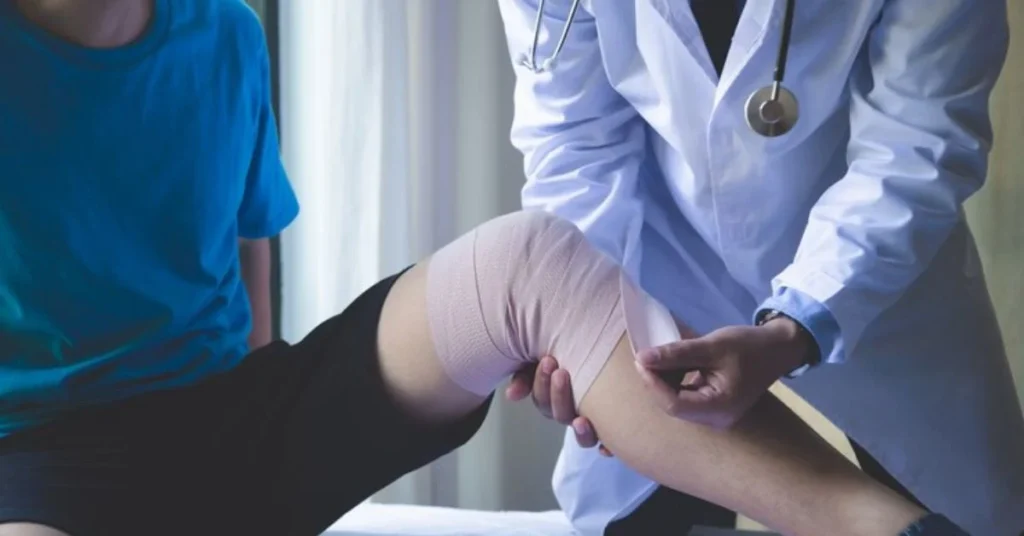Experiencing discomfort after anterior cruciate ligament ACL surgery is expected—but knowing which symptoms are normal and which are causes for concern can be the difference between a smooth healing process and complications. If you’re asking about bad signs after ACL surgery, here’s what you need to know within the first few lines:
“Bad signs after ACL surgery” refers to symptoms or developments—such as excessive swelling, persistent pain, fever, numbness, or unusual instability—that may indicate complications requiring prompt medical attention.
In this detailed article, we’ll guide you through each potential warning sign—what it might mean, why it matters, and how you or your support team can respond. Balancing reassurance with vigilance, we aim to empower your journey through recovery with clarity, confidence, and clear next steps.
1. Understanding Normal vs. Concerning Recovery
What’s Normal After ACL Surgery
After ACL reconstruction, it’s common to experience:
- Swelling and stiffness during the first few weeks
- Aching pain, especially when walking or climbing stairs
- Moderate bruising around the knee or calf
- Mild warmth and tenderness at the incision site
These discomforts usually improve steadily over 4–8 weeks with physiotherapy, gentle movement, and prescribed pain management.
Why Some Symptoms Should Raise Flags
Persistent, excessive, or unusual developments may signal:
- Infection
- Blood clots (deep vein thrombosis)
- Graft failure or joint instability
- Nerve or vascular injury
- Post-operative complications like hematoma or fibrosis
Understanding the difference between expected and concerning signs will help you know when it’s critical to reach out to your surgeon.
2. Persistent or Worsening Pain
What You Might Experience
- Sharp or throbbing pain that increases over time
- Pain that prevents rehabilitation exercises
- Pain accompanied by visible swelling
Potential Causes
- Infection: Especially if accompanied by fever
- Graft complications: Tension loss, improper healing
- Post-operative nerve irritation or scar tissue pressing on nerves
What to Do
- Report any pain that doesn’t improve after 2 weeks or intensifies after initial progress
- Call your surgeon promptly—early evaluation of graft integrity or infection can prevent long-term damage
3. Excessive Swelling or Fluid Accumulation
Signs to Watch For
- Swelling that worsens after 2–4 weeks
- Swelling spreading below the knee or into the calf
- Firm swelling (suggestive of fluid collection) vs. spongy (expected post-op inflammation)
Possible Explanations
- Hematoma: Blood accumulation that may require drainage
- Effusion or synovitis: Joint fluid buildup beyond normal healing
- Deep Vein Thrombosis (DVT): Especially if coupled with calf pain or redness
When to Seek Help
- Immediate evaluation if swelling is sudden, painful, or limits movement
- Use rest, ice, compression early—but persistent swelling needs imaging and professional review
4. Redness, Warmth, and Fever: Warning Infection
Red Flags
- Redness extending beyond the incision edges
- Warmth, tenderness, or intense throbbing over the scar
- Fever above 100.4°F (38°C)
Infection Risks
Surgical site infections occur in a small percentage of patients. If untreated, they can spread quickly into the knee joint or graft tissue, threatening recovery.
Your Response
- Seek urgent medical attention—oral or IV antibiotics, wound assessment, possible graft salvage
- Avoid self-treatment or delayed reporting, even if symptoms seem mild

5. Numbness, Tingling, or Circulation Changes
Symptoms That Require Attention
- Persistent or worsening numbness around the knee or lower leg
- “Pins and needles,” coldness, or pale skin below the knee
Possible Causes
- Nerve compression from swelling or scar tissue
- Compartment syndrome: Dangerous pressure buildup in leg compartments
- Blood vessel injury: Rare but serious
What to Do
- Prompt evaluation is essential. These symptoms are not part of normal recovery and require urgent intervention.
6. Instability, “Giving Way,” or Locked Knee
Symptoms Not to Ignore
- Knee buckling under weight
- Episodes of instability or “locking” during movement
What It Might Mean
- Graft failure or stretching
- Meniscus tears or cartilage injury
- Mechanical blockage due to loose bodies or scar tissue
Recommended Response
- Stop high-impact rehab activities
- Notify your surgeon for possible imaging (MRI) to assess internal knee integrity
7. Blood Clots: Deep Vein Thrombosis (DVT)
Warning Signs
- Calf pain, swelling, warmth
- Tenderness when calves are squeezed
- Red or bluish skin discoloration
Why It Matters
After lower limb surgery, DVT is a known risk with potentially serious outcomes like pulmonary embolism.
Prevention and Actions
- Early walking, leg elevation, and compression stockings help reduce risk
- Contact your doctor immediately if you suspect DVT—urgent ultrasound evaluation and blood thinners may be required
8. Surgical Site Drainage or Unusual Odor
Symptoms That Pop Up
- Persistent oozing of fluid from the incision
- Foul-smelling discharge or colored drainage
Potential Problems
- Infection
- Seroma: Collection of clear fluid needing medical assessment
- Wound dehiscence: Partial opening of the incision
Your Course of Action
- Don’t delay—call your surgeon and keep a clean dressing. Lab tests may be needed for cultures.
9. Limited Range of Motion, Stiffness, or Arthrofibrosis
Signs to Note
- Difficulty bending or straightening beyond what is expected
- Ongoing stiffness despite physiotherapy
- Persistent “catching” or “creaking” sounds during movement
What Could Be Going On
- Arthrofibrosis (excess scar tissue) limiting range
- Inadequate rehabilitation or aggressive immobilization
- Underlying joint infection or mechanical obstruction
Recommended Action
- Report persistent stiffness after 6–8 weeks
- Your surgeon may recommend anti-inflammatories, guided therapy, or—even arthroscopic release
10. Psychological Responses and Motivation Collapse
Emotional Red Flags
- Severe anxiety about weight-bearing
- Depression or chronic fear of reinjury
- Declining participation in therapy
Why It’s Important
Recovery from ACL surgery is as mental as it is physical. Psychological blocks can delay or even disrupt rehabilitation.
What Can Help
- Open conversation with your surgeon or PT
- Consider counseling or consult with a sports psychologist
- Support from family, peers, and rehab staff makes a difference in outcomes
Staying Proactive: How to Monitor and Support Your Recovery
- Track symptoms daily—note pain levels, swelling, mobility
- Log rehab notes—probing progress and exercises completed
- Stay honest—even mild discomfort deserves attention
- Communicate consistently—with your PT and surgeon
- Know your safe limits—avoid high-impact activities before clearance
Conclusion: ACL Surgery
Recognizing the difference between normal discomfort and dangerous signs after ACL surgery can save you time, pain—and possibly permanent knee function. While aches, bruises, and mild swelling are part of healing, persistent or severe symptoms—such as intense pain, swelling, redness, fever, numbness, instability, or limited motion—demand prompt professional evaluation.
Your recovery is a journey, not a sprint: steady progress and reporting warning signals early can protect both your graft and your long-term mobility. In partnership with your surgical and rehabilitation teams, responsiveness and resilience are your most potent strategies.
FAQs
1. When is knee pain normal after ACL surgery?
Mild to moderate pain that improves over 4–8 weeks is normal. Persistent sharp pain or increasing discomfort needs evaluation.
2. How much swelling is too much?
Swelling that intensifies after week 3, spreads into the calf, or feels firm versus soft may indicate complications.
3. Can a fever after ACL surgery indicate infection?
Yes, any temperature above 100.4°F (38°C), especially with redness or warmth, should prompt immediate medical attention.
4. What does numbness after surgery mean?
Persistent numbness or tingling may signal nerve irritation or vascular issues—mention it at your next follow-up.
5. How soon should I seek help for instability or locked knee?
Report any giving way, locking, or mechanical symptoms to your surgeon immediately to evaluate graft or joint integrity.
For more information, click here.









